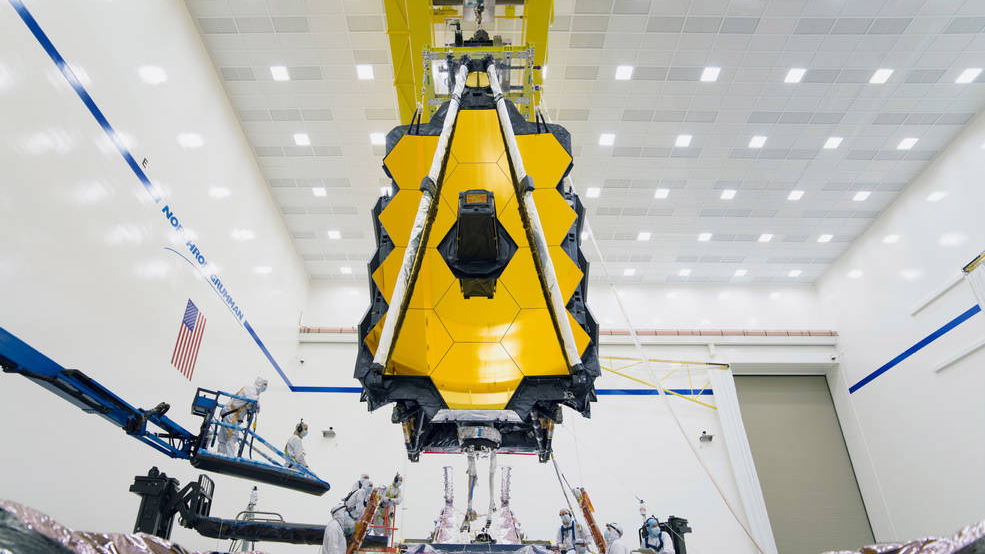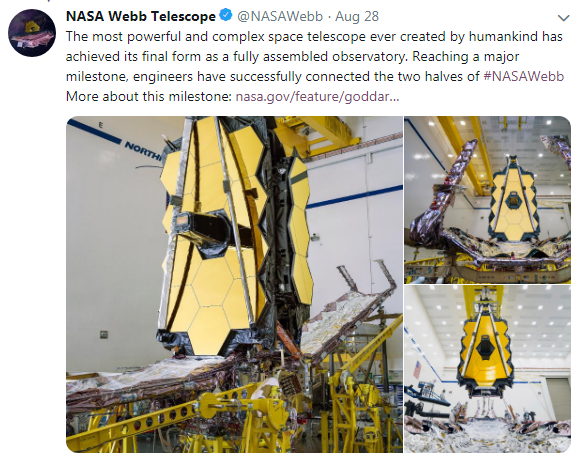

Integration teams gently guide Webb’s suspended telescope section into place above its spacecraft element. / Image via NASA official website
A significant milestone in the construction of the James Webb Space Telescope (JWST), the successor to the Hubble observatory, has been reached ahead of its scheduled launch in March 2021, NASA announced on Aug 28.
Engineers at Northrop Grumman's facilities in Redondo Beach, California, the prime contractor for JWST, have connected the two halves – the spacecraft and telescope.
"The assembly of the telescope and its scientific instruments, sunshield and the spacecraft into one observatory represents an incredible achievement by the entire Webb team," said Bill Ochs, Webb project manager of NASA's Goddard Space Flight Center in Greenbelt, Maryland.
The complex and foldable sunshield can keep the instruments of the telescope cool during operation.
NASA says the JWST will be the world's premier space science observatory designed to explore the universe with its infrared light from the solar system to the remote galaxies.

Screenshot via NASA Webb Telescope official
The engineers have connected the two halves mechanically, while they still need to build and test the electrical connections between the pieces, NASA said in a release.
Both major components of the telescope have been tested individually through the environments that they would encounter during their duty. Still, it will go through additional environmental and deployment testing to ensure the mission is successful.
"This milestone symbolizes the efforts of thousands of dedicated individuals for over more than 20 years across NASA, the European Space Agency, the Canadian Space Agency, Northrop Grumman and the rest of our industrial and academic partners," Ochs added.
The launch of the giant telescope was initially scheduled in 2018, but was later delayed and is currently undergoing integration and test phases, said the NASA official.

Copyright © 2018 CGTN. Beijing ICP prepared NO.16065310-3
Copyright © 2018 CGTN. Beijing ICP prepared NO.16065310-3